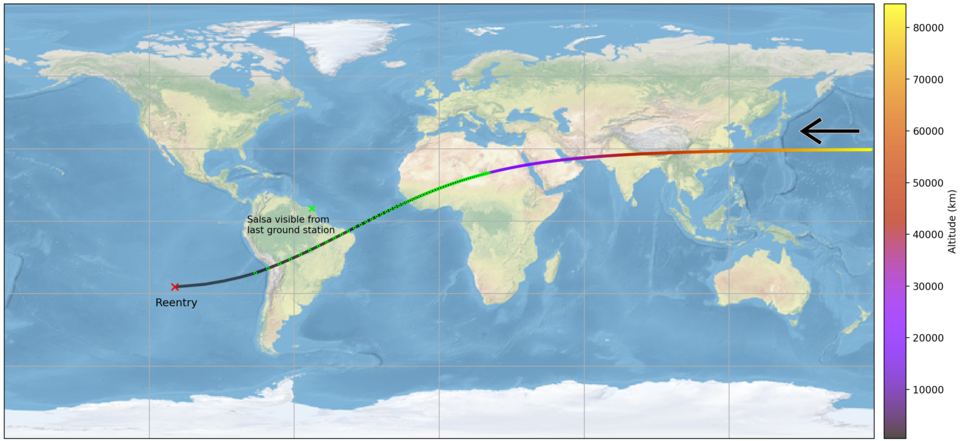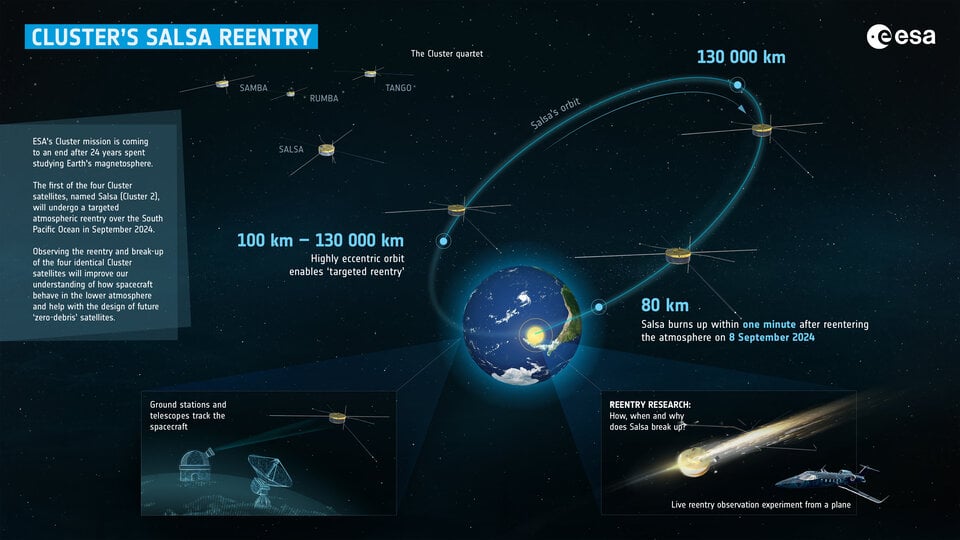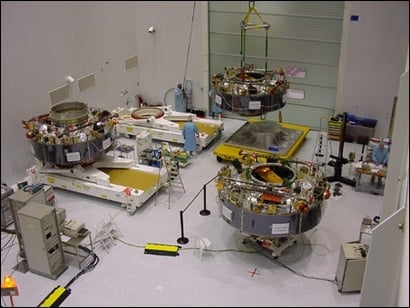The first of a set of groundbreaking Cluster satellites is set for a controlled reentry next week.
The European Space Agency is paving the way in controlled reentry technology. ESA recently announced that plans to terminate the first of four Cluster satellites is about to come to fruition in early September, with the reentry of Salsa.
The Reentry
Salsa is one of four dance-themed Cluster satellites. The other three are Rumba, Samba and Tango. ESA controllers used the remaining thruster fuel on the spacecraft back in January to lower the perigee of the mission down to around 100 kilometers, which will assure destructive reentry for the 550 kilogram satellite over the South Pacific on or around September 8th. The area the satellite will meet its demise is known as ' Point Nemo ' or the Pacific Ocean Uninhabited Area. The region has seen several large reentries over the years, including the Mir space station and ESA's
"By studying how Salsa burns up, which parts might survive, for how long and in what state, we will learn much about how to build 'zero debris' satellites," says Tim Flohrer, (ESA-Space Debri Office) in a recent press release.
A Pioneering Mission
ESA designed the Cluster mission to explore space weather interactions with the Earth's magnetic environment as the four spacecraft fly in a tetrahedral configuration through the planet's magnetosphere. The four spacecraft fly out to a distant apogee of about 117,000 kilometers (over three times farther out versus geosynchronous orbit), and orbit the Earth once every 54 hours.
Launched in the summer of 2000, the Cluster satellites had a 5-year nominal mission, which lasted well over two decades. The missions have since proven to be pioneers in space weather research. The mission also escaped glitches and software failures over the years, including a bug requiring a " dirty hack " in 2010. Cluster II was also a replacement for the original set of Cluster satellites, which were lost on the inaugural launch of the Ariane-5 rocket on June 4th, 1996 from the Kourou Space Center. The mission ended in an explosion
 Universe Today
Universe Today



